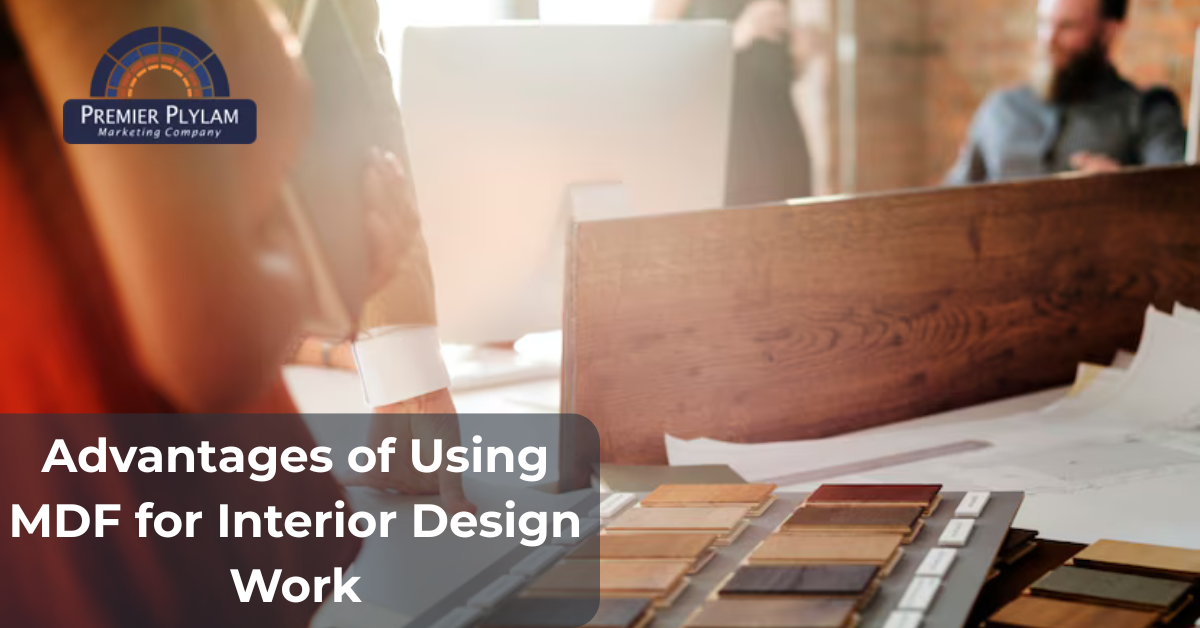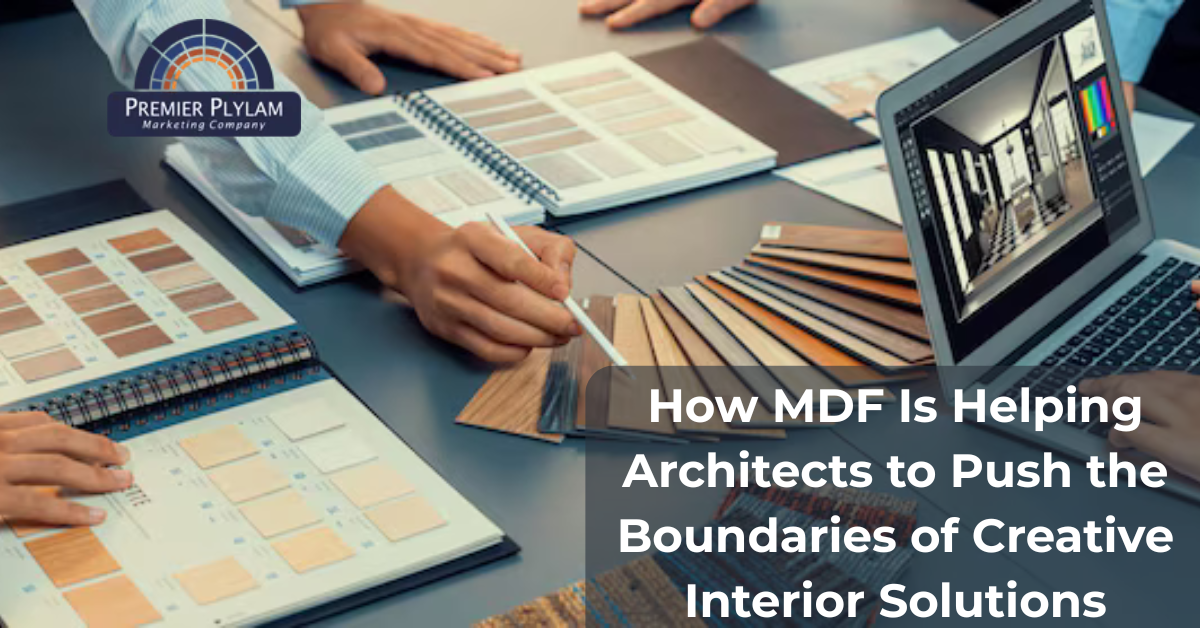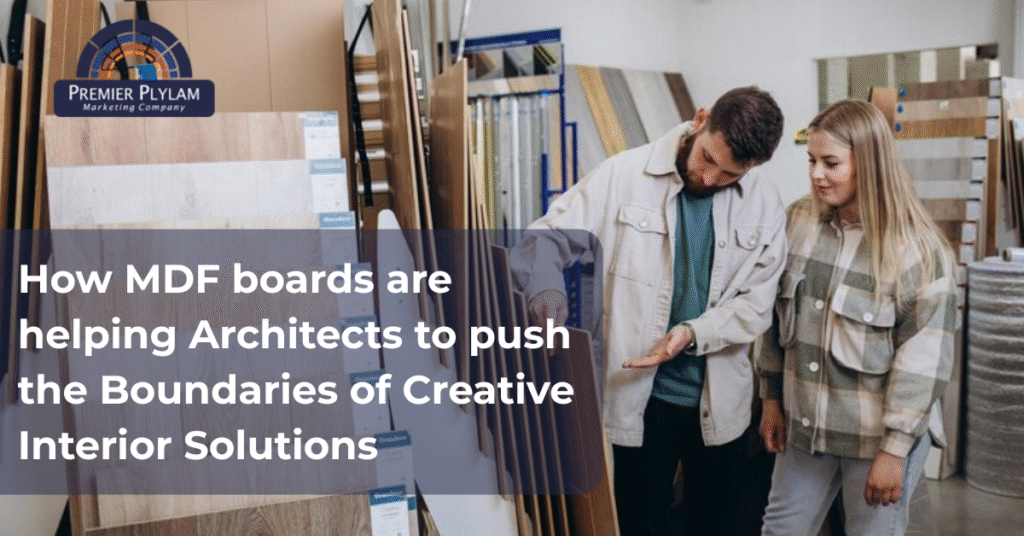Creativity in interior design and architecture is all about creating spaces that are special, lovely, and functional. MDF is enabling architects to stretch the limits of innovative interior solutions to heights that were never before possible. This blog will discuss how MDF board is changing interior design and why it is fast becoming the top choice among architects across the globe.
What is MDF board?
Before even getting to its imaginative applications, let’s discover what MDF stands for: Medium-Density Fibreboard. It is an artificial wood item that is manufactured by disintegrating wood or softwood waste into wood fibres, blending the same with wax and resin, and compressing panel products at high pressure and heat.
MDF is level, even, and tight, making it extremely comfortable to handle. MDF board is also cheaper than solid wood, but it can deliver such great results for interior design projects.
Reasons Architects Like Working with MDF board
Architects like working with MDF board because it provides numerous benefits that assist in the production of new designs:
Smooth Surface for Painting and Finishing
MDF is so level and even in texture to natural wood that it can have knots or grain lines. Due to its levelness, designers and architects are able to paint MDF any colour or finish. From matte to gloss to textured, MDF is straightforward to work with and suits architects well to realise their fantasy with precise details.
Simple to Bend and Cut
One of the largest reasons MDF is utilised so widely by architects is that it is so adaptable in its design.MDF is very easy to cut, drill, route, and carve for pattern making of intricate designs. This benefit offers millions of opportunities for decorative interior products like intricate wall panels, one-of-a-kind cabinetry, curved furniture pieces, and artwork dividers.
Homogeneous Quality and Size
As MDF is produced under controlled circumstances, it is cut alike in size and thickness. This uniformity benefits architects in designing and implementing their thoughts with accuracy, avoiding wastage, and imparting a smooth finish.
How MDF is Leading the Way for Creative Interior Solutions
The following are some ways in which MDF is facilitating architects to transcend creative boundaries:
Customised Wall Panels and Feature Walls
Architects adore designing beautiful feature walls that become the centre of attention in a room. MDF panels can be manufactured with laser-cut designs, 3D textures, or geometric designs that introduce depth and personality to an area. MDF is different from wood panelling as it provides the ability to have extremely small and intricate designs that could be painted with any colour based on the theme of decor.
Creative Furniture Designs
From curved floating shelves to minimalist chic sleek tables, MDF provides room for the creation of individual pieces of furniture. Architects use MDF to create furniture that is a hybrid of function and form. MDF has a smooth surface that allows for easy finishing, and its capacity to bend (with appropriate treatment) allows for contemporary, trendy shapes typical of the age.
Creative Ceiling Designs
Architectural ceilings are not flat planes any longer. Stunning ceiling solutions with patterns, coffers, or mouldings are now achievable with MDF and can be created by architects. These types of ceiling solutions bring dramatic and sophisticated touches to any area and are, in many cases, easier to install than conventional materials.
Advantages of Using MDF for Interior Design Work

In addition to its beauty benefits, MDF also has functional benefits that make it well-suited for architects:
- Longevity: MDF does not splinter and is a long-lasting, high-quality material for interior design.
- Sustainable: The MDF reinforces the re-appropriated wooden fibres and contains minimal waste, so architects can advocate a durable building.
- Fire resistance: Fire-resistant types of MDF also exist, which contribute to fire protection in buildings.
- Easy Maintenance: MDF surfaces are simple to clean and maintain, ideal for commercial as well as busy household conditions.
Common Applications of MDF in Interiors
To create a better picture, some typical interior components where architects find it convenient to use MDF include the following:
- Wall cladding and decorative panels
- Kitchen cabinets and countertops
- Shelving units and display racks
- Doors and door frames
- False ceilings and cornices
- Furniture items such as tables, desks, and beds
- Reception counters and office partitions
Tips for Architects Using MDF
Though MDF is simple to work with and versatile, architects should have the following in mind for the most appropriate outcome:
- Always seal and finish correctly to shield MDF from attack by moisture.
- Use proper MDF thickness according to the structural requirements.
- Use proper cutting tools so as not to cause chipped edges.
- Use fire-rated MDF for applications with fire protective requirements.
- Deal with experienced carpenters or fabricators who know the nature of MDF.
Conclusion: MDF is Changing Interior Design Imagination
MDF has revolutionised how architects approach interior design. Its flexibility, affordability, and good finishing characteristics provide architects with an opportunity to be as creative as they can imagine. Be it designing complex wall panels, cutting out bizarre furniture, or designing innovative ceiling shapes, MDF board suppliers in Jaipur offers the ideal surface for architectural imagination.
With every shift in trends and requirements in interior spaces, MDF board remains a trusted and motivational material that encourages architects to break new ground in design. With its adoption, architects are not only capable of designing beautiful interiors but also efficient and sustainable designs that remain evergreen.


